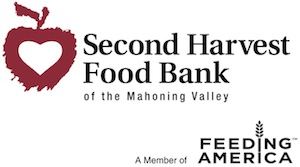This year, give the gift of branding.
"Look, Santa baby! You're never gonna make it without a new image," was how his weary Tinseltown agent put it.
Yes, Virginia, even that jolly old elf benefited from a branding makeover based on the time-tested principles of positioning. Innis Maggiore wasn't around back then, but you'd think we had a hand in saving the holidays upon hearing the tale.
The modern Santa is a multicultural marvel. A 4th century Greek bishop. German yuletide. Some influence from The Netherlands, Belgium and Scandinavia, merged with facets from England and its bothersome British Colony (that's us).
But the image! Saint Nicholas of Myra gave gifts all right, but was dour-looking and balding, wearing canonical robes with no hint of a "ho-ho-ho" in sight. During the Middle Ages, our Santa-in-progress had a midlife crisis, adding the long, white beard but dressed in a not-so-celebratory grey.<
It took the New World to make a new, "relatable" Saint Nick. In the mid-1800s, his agent sent him to an advertising agency that repositioned him as jolly and Americanized the name Sinterklaas.
The changes tested well. His HQ was relocated to the North Pole (thus making him a global brand in the literal sense). Next came all-new branding and a customer-centric, engaging and disruptive identity system by the creative team of Thomas Nast, et al.: belly/jelly, sleigh/roof, bag/toys, reindeer/fly. He became so big, Santa scored an exclusive long-term contract to hawk Coca-Cola (red suit/red Coke iconography!).
His Q Score® soared. Movies ... TV ... books ... parades ... product placement during weather reports ("Santa Tracker") ... even hit songs about the guy.
Repositioning made Santa Claus a superstar, culminating in 1964's classic film Santa Claus Conquers the Martians, featuring then-child actor and later Love Boat curiosity Pia Zadora. He MADE IT, big time! But the journey wasn't exactly a smooth slide down the chimney. That's the way enduring branding can be sometimes. But it's worth it.
Happy holidays from your little branding helpers at Innis Maggiore ... and to all a good position.
Innis Maggiore Case Study

Leading the Fight Against Hunger
Pay the electric bill or buy groceries? Go hungry or go without heat? It's an impossible choice, but it's reality for too many seniors, veterans and families throughout the United States.
Hunger is no stranger to Ohio's Mahoning Valley. Rocked by the closing of steel mills decades ago, unemployment in the valley still remains higher than the state average. By the early 1980's, the problem of hunger soon reached an inflection point. At the same time more people were moving out of the region, more people in the region were beginning to experience real hunger.
Second Harvest, a member food bank of Feeding America, saw the need for a tough-minded marketing strategy. One that would grow community support and measurably expand donor giving.
In the game of communication, resources dictate strategy. This is especially true for non-profits. The problem of hunger demanded a direct route. One that would be as efficient as it was effective. For this reason, Innis Maggiore narrowed its communication focus to one medium - direct mail.
The key was in the data! By analyzing the top three demographic characteristics of Food Bank donors, the agency was able to model Second Harvest's "best audience." Numerous mailing lists based on the demographic modeling delivered the goods:
-
- Second Harvest's donor base grew by an estimated 700% due largely to the direct mail initiatives
-
- Volunteers have more than doubled, and;
-
- Food distribution this year will exceed 9 million pounds, a five-fold increase from 2003 levels when the agency's work with the Food Bank first began.
The fight against hunger persists, as Second Harvest and its member agencies continue to fill more than 15,000 requests for food assistance per day. But armed with an effective direct mail strategy and a generous community, the Food Bank's 153 member agencies including pantries, after-school programs and homeless shelters will stay stocked, and more hungry families will be able to put food on their tables.




